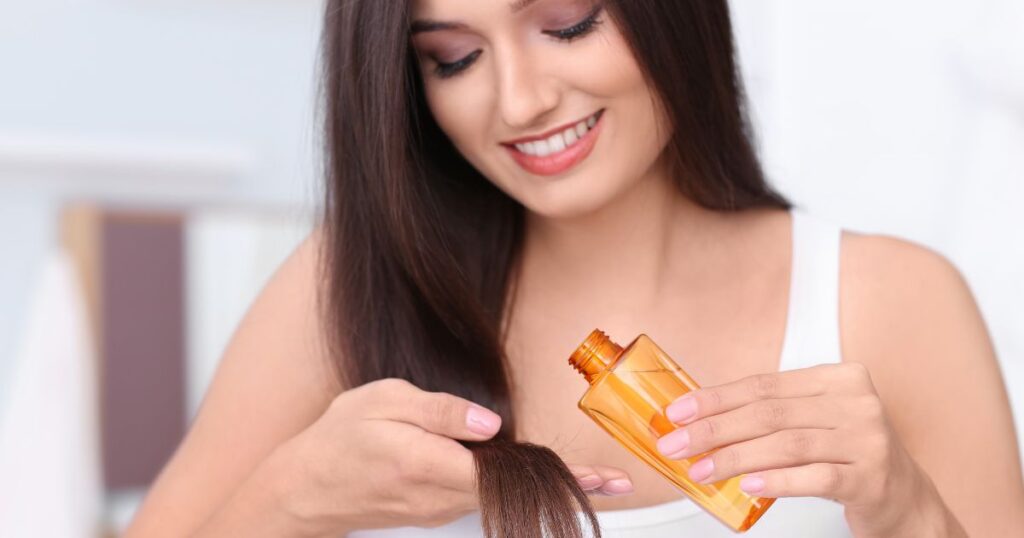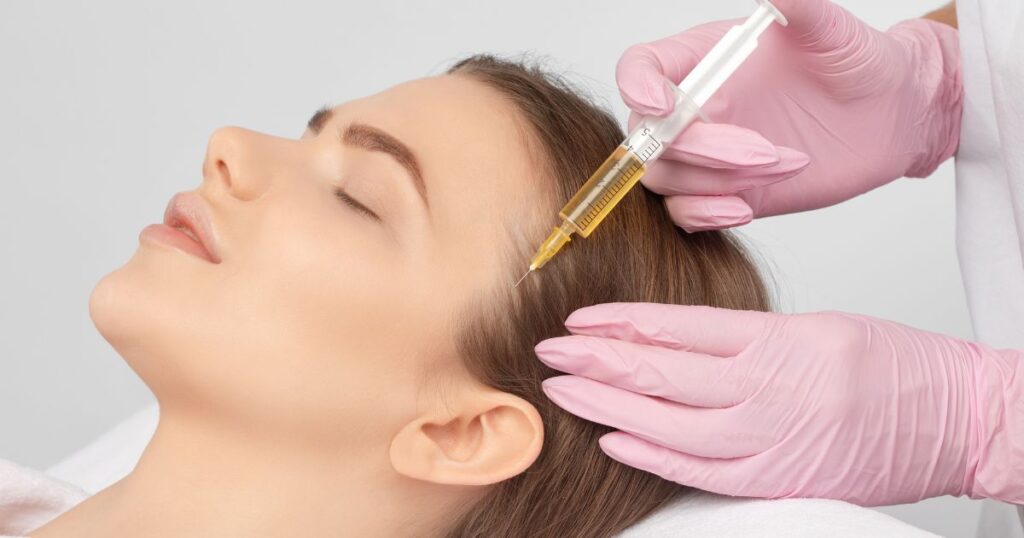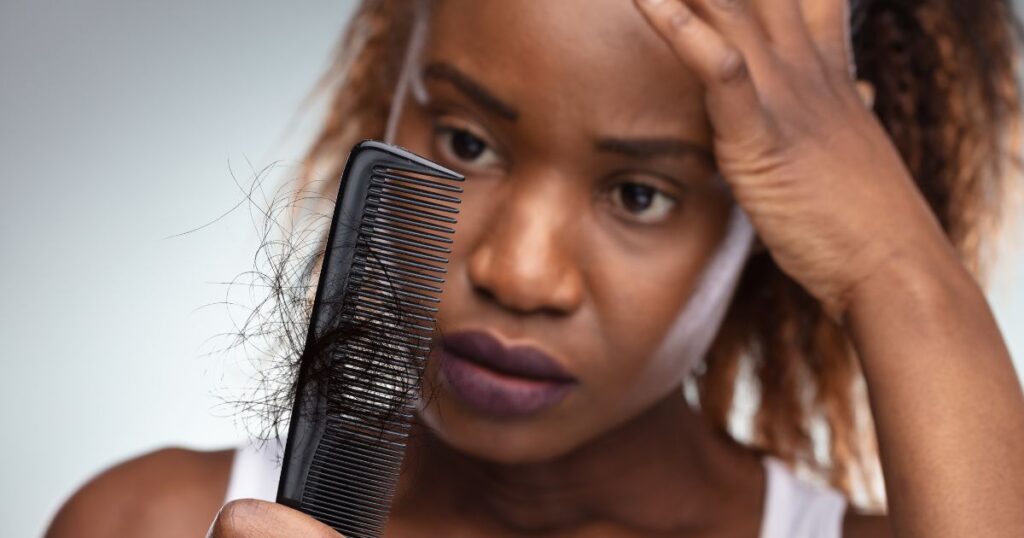Minoxidil has emerged as a popular solution for those battling hair loss. Originally developed for medical purposes, its effectiveness in promoting hair growth has garnered attention worldwide. As we navigate the complexities of hair loss solutions, the importance of understanding minoxidil and its associated side effects cannot be overstated. This brings us to the clean beauty perspective, a movement that prioritizes health, safety, and sustainability in beauty and personal care products.
- Origins and Use: Initially intended for treating high blood pressure, minoxidil’s hair growth properties were discovered serendipitously, leading to its widespread use for combating hair loss.
- Growing Interest: The clean beauty community’s growing interest in minoxidil revolves around a desire to understand its side effects fully. This understanding is crucial for making informed decisions that align with clean beauty principles.
- Clean Beauty Approach: Embracing clean beauty involves choosing products that are safe, non-toxic, and environmentally friendly. When discussing minoxidil, this perspective encourages a holistic view of hair care, focusing on both effectiveness and health.
This article delves into the side effects of minoxidil through the lens of clean beauty, offering insights into common reactions, management strategies, and alternative solutions that honor the principles of clean beauty. Our goal is to empower readers with knowledge, enabling them to make informed decisions about their hair care routines while adhering to clean beauty values.
Table of Contents - Click to Go
Common Side Effects of Minoxidil

Minoxidil is widely acknowledged for its effectiveness in treating hair loss, but its use is not without potential drawbacks. Here, we delve into the most commonly reported side effects of minoxidil, emphasizing the importance of awareness and caution.
- Scalp Irritation: A frequent complaint among minoxidil users is scalp irritation. This can manifest as redness, dryness, or flakiness, often leading to discomfort.
- Itching: Alongside irritation, itching is a common side effect. This can be mild but persistent, causing inconvenience to users.
- Unwanted Facial Hair Growth: Particularly noted in women, the use of minoxidil can sometimes lead to unwanted facial hair growth. This side effect varies in intensity but can be distressing.
- Dizziness and Fatigue: Some users report feeling dizzy or unusually tired after using minoxidil. These symptoms are less common but can significantly impact daily activities.
- Weight Gain: Unexplained weight gain has been observed in a small number of cases. Monitoring weight while using minoxidil is advised.
From a clean beauty standpoint, being informed about these side effects is paramount. It empowers individuals to make choices that align with their health and wellness values. By understanding the potential adverse effects of minoxidil, users can better weigh its benefits against its risks, ensuring that their hair care practices are safe and align with clean beauty principles.
Managing Side Effects and Embracing Clean Beauty Solutions
When considering minoxidil for hair loss, it’s crucial to not only be aware of the potential side effects but also understand how to manage them effectively. Here are some strategies to mitigate minoxidil’s side effects while embracing clean beauty solutions:
- Scalp Care: If experiencing scalp irritation or dryness, consider using gentle, toxin-free shampoos and conditioners. These products can help soothe the scalp without adding harmful chemicals.
- Natural Moisturizers: For dryness and flaking, natural oils such as coconut, jojoba, or argan oil can be excellent alternatives. They moisturize the scalp naturally, without the adverse effects of synthetic additives.
- Healthy Lifestyle Choices: Incorporating a balanced diet and adequate hydration can support overall skin and hair health, potentially reducing the severity of side effects.
- Spot Treatment: In case of unwanted hair growth, targeted hair removal methods can be employed, such as threading or natural hair removal creams that align with clean beauty standards.
- Consultation with Professionals: If side effects persist, consulting with healthcare providers or dermatologists is advisable. They can offer guidance tailored to your specific needs and may suggest clean beauty-compatible alternatives.
- Embrace Clean Beauty Hair Care: Integrating clean beauty practices into your routine involves choosing products that are free from harsh chemicals, parabens, sulfates, and fragrances. Look for certifications that guarantee products meet stringent clean beauty criteria.
By managing the side effects of minoxidil with these clean beauty strategies, you can maintain a hair care routine that is not only effective but also aligns with the principles of safety, health, and environmental sustainability.
Understanding Minoxidil: Its Uses and How It Works

Minoxidil, originally developed as a medication to treat high blood pressure, found a second life as a revolutionary treatment for hair loss. Its journey from a potential ulcer treatment to a hair growth stimulant is a testament to the serendipitous nature of medical discoveries. Here’s a closer look at how minoxidil functions and its place within the realm of clean beauty:
- Historical Development: Minoxidil’s ability to promote hair growth was discovered incidentally during its use as a blood pressure medication. Patients reported increased hair growth as a side effect, which led to the repurposing of minoxidil for treating hair loss.
- Mechanism of Action: As a vasodilator, minoxidil works by expanding blood vessels, which in turn enhances blood flow to the scalp. This increased circulation delivers more nutrients and oxygen to hair follicles, potentially revitalizing the hair growth cycle and encouraging the growth of new, healthier hair.
- Uses in Hair Loss: Minoxidil is most commonly used to treat androgenetic alopecia (pattern hair loss) in both men and women. It is available in various forms, including topical solutions and foams, making it a versatile option for those struggling with hair thinning and loss.
- Clean Beauty Perspective: From a clean beauty standpoint, understanding the mechanism and uses of minoxidil is crucial. It underscores the importance of choosing hair loss treatments that not only effectively address the issue but also align with the principles of non-toxicity and sustainability. This awareness encourages individuals to explore treatments that are safe for long-term use and have minimal environmental impact.
Incorporating minoxidil into a hair care regimen requires a balance between harnessing its benefits for hair growth and adhering to clean beauty values. By prioritizing treatments that are both effective and ethically produced, individuals can support their hair health while also contributing to the broader goals of environmental stewardship and personal well-being.
Clean Beauty Alternatives to Minoxidil

In the quest for hair loss solutions, the clean beauty movement offers a treasure trove of natural, plant-based alternatives that align with the ethos of health, sustainability, and non-toxicity. These alternatives not only minimize the risk of side effects but also nurture the scalp and hair with gentle, nourishing ingredients. Here are several clean beauty alternatives to minoxidil for those seeking a more holistic approach to hair care:
- Essential Oils: Certain essential oils, renowned for their therapeutic properties, have been shown to support hair growth and health.
- Peppermint Oil: Known for its invigorating properties, peppermint oil can stimulate the scalp and promote increased blood circulation.
- Rosemary Oil: Often compared to minoxidil in its efficacy, rosemary oil is celebrated for its ability to enhance hair thickness and growth.
- Herbal Extracts: Herbs like saw palmetto and nettle have been used for centuries in traditional remedies for hair loss. They work by potentially blocking DHT (dihydrotestosterone), a hormone associated with hair loss.
- Aloe Vera: Renowned for its soothing and moisturizing properties, aloe vera can help calm scalp irritation and provide a healthy environment for hair growth.
- Nutritional Support: Supplements rich in vitamins and minerals such as biotin, vitamin E, zinc, and iron support hair health from the inside out, addressing potential nutritional gaps that could be affecting hair growth.
- Scalp Massage: Regular scalp massages can increase blood flow to the hair follicles, potentially encouraging growth. Using natural oils during these massages can add an extra layer of nourishment and relaxation.
- Clean Beauty Products: Opt for hair care products that are free from sulfates, parabens, and silicones. Products containing natural ingredients like tea tree oil, argan oil, and keratin can support hair health without exposing you to harmful chemicals.
By embracing these clean beauty alternatives, individuals can explore hair loss solutions that are in harmony with a lifestyle focused on health, sustainability, and the avoidance of harsh chemicals. These alternatives offer a compassionate approach to hair care, prioritizing the well-being of both the individual and the planet.
Conclusion: Navigating Hair Loss with Clean Beauty

Navigating the challenge of hair loss requires a careful balance between effective treatment and the principles of clean beauty. Through this article, we’ve explored the side effects of minoxidil, a commonly used treatment, and highlighted the importance of being informed about these potential reactions.
Key Takeaways:
- Informed Decisions: Understanding the side effects of minoxidil is essential for anyone considering it as a treatment option. Knowledge empowers you to make choices that best suit your health and lifestyle needs.
- Clean Beauty Practices: Integrating clean beauty solutions into your hair care routine offers a holistic approach to managing hair loss. These practices not only align with health and environmental values but also promote a nurturing approach to personal care.
- Alternatives and Support: The clean beauty movement provides a wealth of natural alternatives and supportive practices for those seeking to address hair loss without compromising on safety or sustainability.
As we conclude, the journey through understanding minoxidil’s side effects and exploring clean beauty alternatives reaffirms the value of making informed, health-conscious decisions about our hair care. Whether you choose to use minoxidil or opt for natural remedies, the priority should always be your well-being and alignment with clean beauty principles. Embrace the journey with confidence, knowing that there are numerous paths to achieving healthy, vibrant hair while upholding the values of clean beauty.
FAQ
What is minoxidil, and how does it work?
Minoxidil is a medication initially developed to treat high blood pressure, but it was found to have the side effect of promoting hair growth. It works as a vasodilator, widening blood vessels and improving blood flow to the scalp, which can enhance the delivery of oxygen and nutrients to hair follicles, encouraging hair growth.
Can minoxidil cause permanent side effects?
Most side effects of minoxidil, such as scalp irritation or increased hair growth in unwanted areas, are reversible and typically subside once treatment is discontinued. However, it’s important to consult with a healthcare professional if you experience any severe or persistent side effects.
What are some clean beauty alternatives to minoxidil for hair loss?
Clean beauty alternatives for hair loss include:
- Essential oils like peppermint and rosemary oil
- Herbal extracts such as saw palmetto and nettle
- Aloe vera for scalp health
- Nutritional support with vitamins and minerals
- Regular scalp massages to improve circulation
How can I manage the side effects of minoxidil?
Managing side effects involves:
- Using gentle, toxin-free hair care products
- Applying natural oils to moisturize the scalp
- Maintaining a healthy diet and hydration
- Consulting with healthcare professionals for severe side effects
Is it possible to use minoxidil as part of a clean beauty regimen?
Yes, minoxidil can be part of a clean beauty regimen when complemented with natural, non-toxic hair care products and practices that support scalp health and overall wellness.
How long does it take to see results from minoxidil?
Results from minoxidil can vary, but many users start to see improvement in hair growth within 3 to 6 months of consistent use.
Can natural remedies effectively replace minoxidil?
While natural remedies can support hair health and reduce hair loss for some individuals, their effectiveness varies. Minoxidil has been clinically proven to promote hair growth, so natural remedies may serve as complementary treatments rather than direct replacements.
Are there any clean beauty products that complement minoxidil treatment?
Yes, clean beauty products that are free from harsh chemicals, sulfates, and parabens can complement minoxidil treatment by providing gentle care to the scalp and hair.
How do I choose the right hair loss treatment for me?
Choosing the right hair loss treatment involves:
- Understanding the cause of your hair loss
- Considering your health, lifestyle, and preferences
- Consulting with healthcare and hair care professionals
What should I do if I experience severe side effects from minoxidil?
If you experience severe side effects from minoxidil, it’s important to stop using the product and consult with a healthcare professional immediately for guidance and potential alternative treatments.

